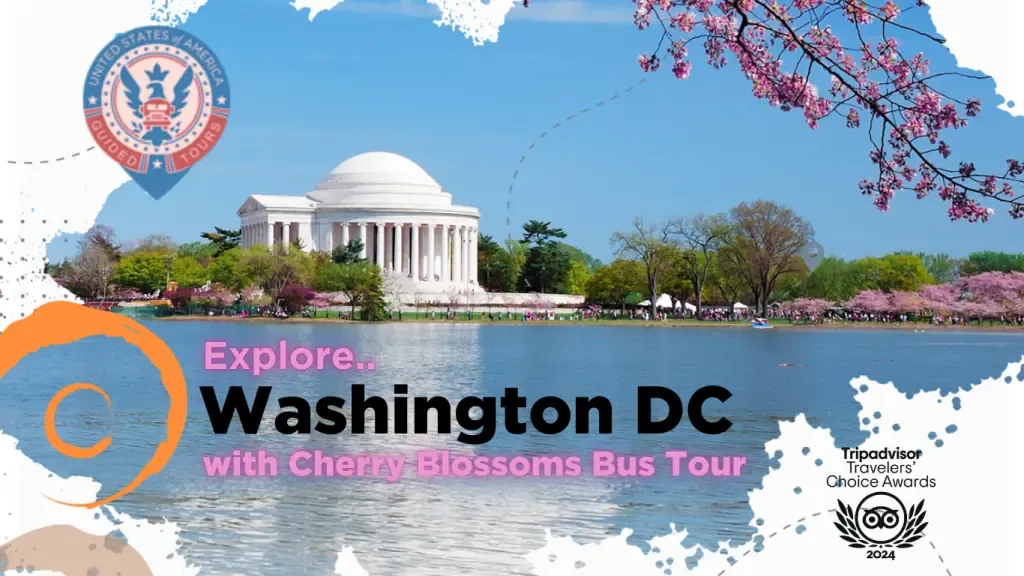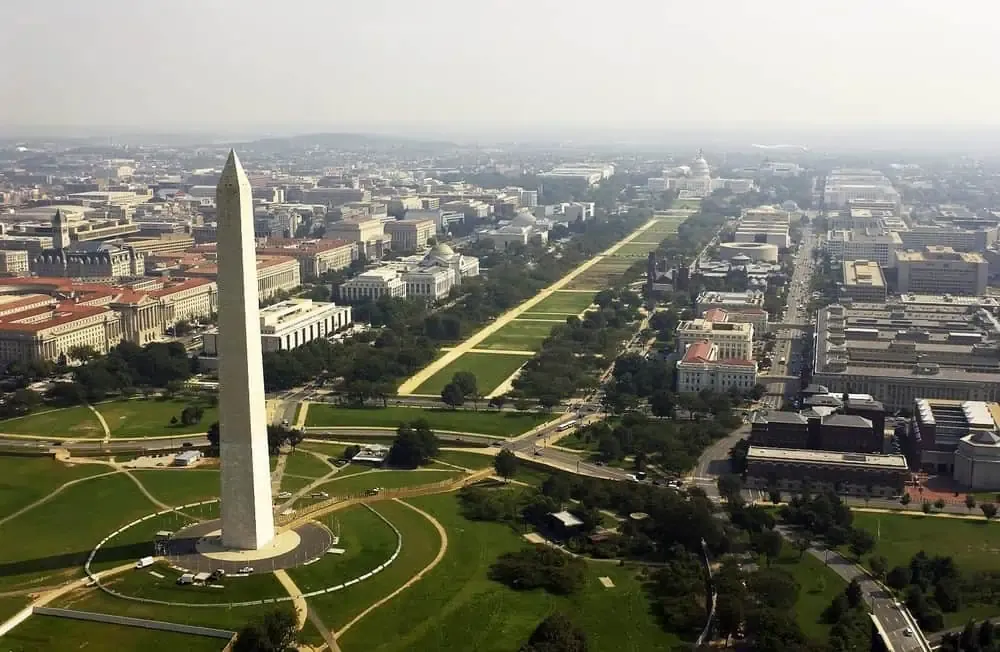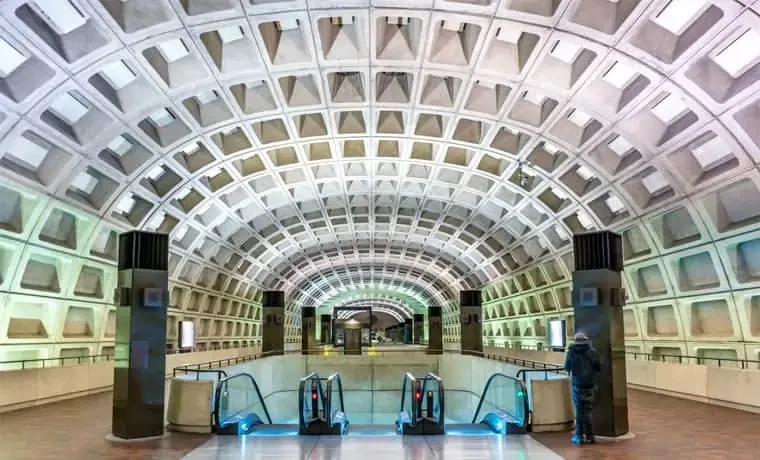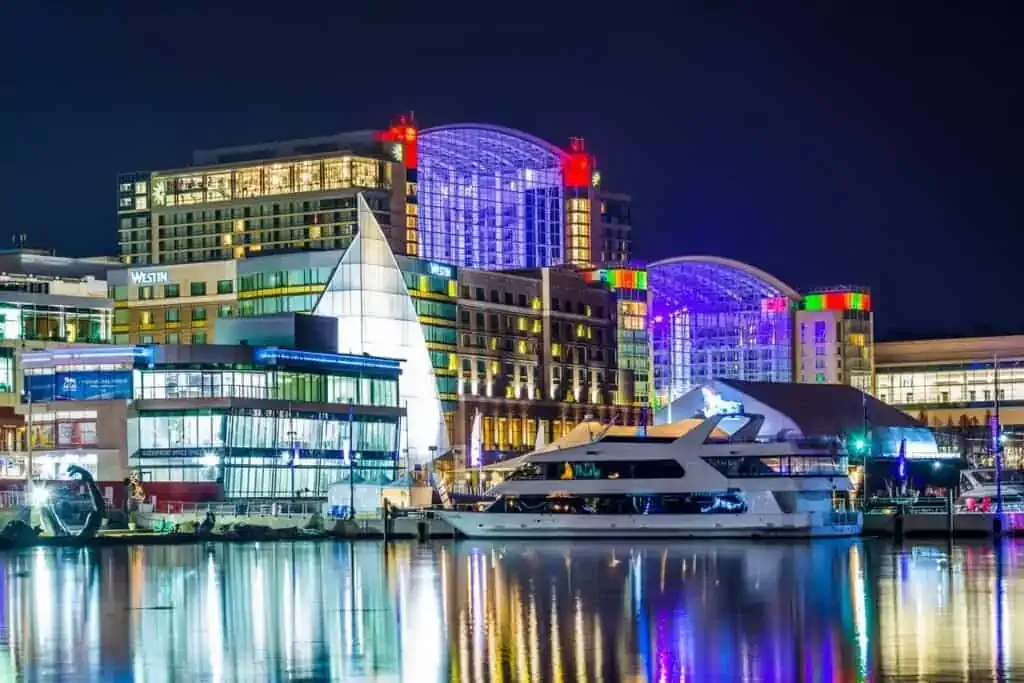If you’re planning a trip and wondering what to prepare for traveling to Washington, you’re in the right place. A little preparation goes a long way in ensuring you have a memorable and stress-free experience in this vibrant metropolitan area. Whether it’s your first visit or a return trip, understanding the nuances of navigating the city will help you make the most of your time.
Known by locals as the “DMV” – encompassing the District, Maryland, and Virginia – Washington D.C. is not a state but rather the District of Columbia. You’ll often hear it referred to simply as “the District,” “Washington,” “DC,” or “our nation’s capital.” These terms are generally interchangeable in common usage. The city itself covers 68 square miles and hosts a population of around 700,000, while the broader DMV metropolitan area is home to about 6 million residents. Getting ready for your adventure means considering everything from key sights to practical logistics.
Here are some essential tips to help you prepare for traveling to Washington, ensuring your first visit is smooth and enjoyable. These insights cover planning, getting around, and making the most of your time in the nation’s capital.
What To Prepare For Traveling To Washington – Your Essential Checklist
For many visitors, simply viewing the iconic People’s House from outside and capturing some photos is a highlight. However, if your goal is to tour the interior, spontaneous visits are not possible. Securing a tour requires significant foresight and planning.
Once your travel dates are confirmed, initiate your White House tour request through a member of Congress. It’s recommended to submit your request at least 21 days before your desired tour date. International visitors will need to work with their respective embassies to facilitate this process. Be aware that due to unforeseen events, tours can be limited or canceled suddenly.
If you’re unable to tour the White House interior, an excellent alternative is “The People’s House.” This institution offers engaging exhibits, state-of-the-art displays, and creative presentations that provide visitors with a fascinating look inside this famous landmark. It’s a great way to gain insight even without stepping inside the actual building.
Remember to factor in extra time for security screenings at many major D.C. attractions, including museums, the National Archives, the Capitol, the Library of Congress, the White House, and Arlington Cemetery. You’ll typically pass through metal detectors, and your bags will go through X-ray machines. Plan accordingly to avoid rushing.
Fun Things to Do in Kissimmee Florida
Where To Go In Waikiki – Your Ultimate Guide to Hawaii’s Iconic Beachfront
The Best Things to Do in Naples – Your Ultimate Italian Experience
Leave snacks outside most venues, as food is generally not permitted. You can usually bring water into most places, but check specific rules – for instance, water bottles must be empty upon arrival at the Capitol. Even with tickets, lines can be long, so wear comfortable shoes, be patient, and eat before visiting. Most sites have cafes, but note that Arlington Cemetery does not, so plan meals ahead (exceptions are made for medical needs).
Choosing the Ideal Season When You Prepare For Traveling To Washington
Selecting the right time of year can significantly impact your experience when getting ready for traveling to Washington. Each season offers a unique atmosphere and set of events, so consider what aligns best with your preferences for weather, crowds, and city aesthetics. Thinking about the climate is a crucial step in your planning process.
Summer is a popular time, especially for families on vacation. However, D.C. summers are known for intense heat and humidity. If you’re sensitive to hot weather, consider visiting during cooler months or planning activities for the evenings when temperatures drop. Night tours can be particularly pleasant during the warmer season.
For those from drier climates like Arizona or the West Coast, the humidity might be particularly noticeable. If you prefer cooler evening experiences, inquire about private tours that allow customized itineraries and start/end times. This flexibility can enhance comfort during peak summer.
Spring and fall are widely considered the most pleasant seasons. Spring is famous for the stunning cherry blossoms, a must-see spectacle. Late October and early November bring beautiful fall foliage as D.C. transforms with vibrant colors. As the “City of Trees,” with over 170,000 trees within its limits, autumn offers a breathtaking backdrop.
Winter sees fewer visitors, making it ideal for exploring without large crowds, despite the sometimes frosty weather. The city also lights up with holiday decorations, and seeing the national Christmas tree is a special winter treat. Consider your weather tolerance and preferred activities when choosing the best season for your visit.

Cherry Blossoms Galore Tour
Prepare for traveling to Washington by choosing the best season, perhaps during the famous cherry blossom bloom.
Consider Starting with a Guided Tour of Washington DC
Washington D.C. is packed with monuments, memorials, museums, and historic neighborhoods, which can feel overwhelming for a first-time visitor. Deciding where to begin your exploration can be challenging given the sheer number of options. A structured approach can help you get your bearings.
Starting with a guided tour can provide an excellent overview of the city’s layout and major landmarks. This helps you get oriented and makes it easier to decide which specific sites you want to explore in more detail later on your own. It’s an efficient way to cover a lot of ground and learn about the city’s history and significance.
For visitors who want a mix of structure and independence, a combination of a fully guided tour and a hop-on/hop-off tour can be a great solution. This allows you to see the main sights with commentary before using the hop-on/hop-off service to revisit places of particular interest at your own pace. Researching kid-friendly tour options can also be helpful if traveling with family.
Understand the Scale: The National Mall is Vast
 Washington DC Panorama | Washington Monument
Washington DC Panorama | Washington Monument
Popular culture depictions, like movies, can make the National Mall appear deceptively compact, with landmarks seemingly just a few blocks apart. In reality, the distance from the Capitol Building to the Lincoln Memorial is about two miles. This is a significant distance to cover, especially if you plan to visit multiple museums and monuments scattered along its length.
Television shows and film lenses often compress perspectives, making distances seem shorter than they are in person. Be prepared for substantial walking when navigating the Mall area. Guided bus tours can be very beneficial here, eliminating much of the walking and taking you directly to key highlights.
Even with transportation, expect a good amount of walking, so comfortable footwear is essential. Many museums along the Mall feature cafes where you can rest and refuel. The Mitsitam Café at the National Museum of the American Indian offers a unique menu, while the recently reopened USDA Cafeteria can be a less crowded option.
If you have limited time, like just 24 hours in D.C., focusing on the National Mall is a wise choice. You could easily spend an entire day exploring its various sites and still not see everything. Prioritize based on your interests to make the most of your visit.
Take Advantage of Free Museums and Attractions
Washington D.C., like many major capitals, can be an expensive city to visit. However, preparing for traveling to Washington on a budget is entirely feasible thanks to the abundance of free attractions. Many of the city’s most significant sites offer free admission, allowing you to experience world-class culture and history without spending a dime.
All Smithsonian museums, including the National Zoo, offer free entry. This provides incredible opportunities to explore art, history, science, and natural history without cost. Similarly, all the major monuments and memorials across the city are freely accessible to the public.
Numerous art museums and galleries, such as the National Gallery, the Hirshhorn, and the Freer and Sackler Galleries, also provide free admission. Beyond indoor attractions, the city boasts beautiful parks and green spaces that are perfect for exploring, relaxing, or enjoying a picnic. Packing your own food and water can help you enjoy a full day of sightseeing economically.
Experience the Monuments Lit Up at Night
To avoid peak daytime crowds and capture stunning photographs, consider visiting the monuments in the evening. Many of D.C.’s most famous memorials are open 24 hours a day and are beautifully illuminated after dark. Seeing them lit against the night sky offers a completely different, often more contemplative, perspective.
The Lincoln Memorial, Jefferson Memorial, Washington Monument, and the Martin Luther King, Jr., Memorial are particularly striking when floodlit at night. This can be a magical experience, offering great photo opportunities and a sense of peace away from the daytime hustle and bustle. Planning an evening tour specifically to see the monuments at dusk or after dark is highly recommended for a unique view of the city.
Bring a Refillable Water Bottle
A simple yet effective way to save money and reduce waste when preparing for traveling to Washington is to carry a refillable water bottle. Instead of purchasing multiple single-use plastic bottles at high prices throughout the day, you can easily refill your own for free at numerous locations across the city.
This practice not only benefits your wallet but also helps combat plastic pollution in urban areas. D.C. participates in the “TapIt” program, where over 750 businesses and attractions partner to provide free tap water refills to visitors and residents. D.C. tap water is known for its quality and taste, so refilling is a great option.
No one will find it unusual if you refill your bottle – it’s a common and encouraged practice. The money saved on bottled water can be used for other aspects of your trip, perhaps souvenirs or a nice meal. Some guided tours even provide complimentary water bottles for their guests.
Get a Rechargeable Metro SmarTrip Card
 14 Tips for Your First Visit to Washington, D.C.
14 Tips for Your First Visit to Washington, D.C.
Efficient public transportation is vital when getting ready for traveling to Washington, D.C. The SmarTrip card is a rechargeable fare card widely used across the D.C. metro area’s transit systems. It works on buses, the light rail, the subway (Metro), and even transit lines extending into popular Maryland and Virginia suburbs.
Acquiring a SmarTrip card simplifies fare payment and allows for seamless transfers between different modes of transport. You can easily add funds to the card as needed. For added convenience, download the SmarTrip app on your smartphone.
The app allows you to instantly add funds, purchase various passes (like a one-day unlimited pass, which offers great value if you plan extensive travel), check your balance, and set up auto-reload. A one-day unlimited pass, costing around $13.50, is particularly cost-effective if you’re exploring different parts of the city throughout the day.
Don’t Miss the Magical City Views From the Water
 Washington, D.C. from a Local Expert: Beyond Capitol Hill
Washington, D.C. from a Local Expert: Beyond Capitol Hill
Washington D.C. is situated on the Potomac River, offering unique perspectives from the water. Including a water-based activity in your itinerary provides a different angle on the city’s famous landmarks and skyline. It’s a refreshing way to see the sights, especially during warmer months.
Potomac Riverboat cruises are a popular option, showcasing key sites from the water. Other activities include kayaking on the Potomac River or renting paddle boats in the Tidal Basin, especially beautiful during cherry blossom season.
Explore the picturesque harbors in the area, such as Washington Harbour in Georgetown or the National Harbor in Maryland. Taking a ride on the Capital Wheel at National Harbor offers spectacular panoramic views of the city and surrounding areas. Private boat tours are also available for a more personalized water experience.
Prioritize Function Over Fashion for Footwear
Washington is an extremely walkable city, and exploring on foot is arguably the best way to truly experience its neighborhoods and discover hidden gems. Even if you plan to use public transport or guided tours, you will still do a considerable amount of walking, navigating between stations, stops, and attractions.
When packing for your trip, prioritize comfortable walking shoes over stylish footwear. Sore feet can significantly detract from your enjoyment of the city. Opt for sneakers or sturdy walking shoes that you know you can comfortably wear for long periods. Your feet will thank you after a day of sightseeing.
Think Twice Before Driving a Car
One crucial piece of advice when getting ready for traveling to Washington is to seriously reconsider driving. D.C. traffic is notoriously bad, and drivers can be quite aggressive. Spending time navigating congested streets or endlessly searching for parking can quickly become a source of frustration and waste valuable sightseeing time.
The city is well-served by public transportation, and its walkability makes driving largely unnecessary for exploring the core attractions. Choosing the Metro, buses, ride-sharing services, or simply walking is generally a far more pleasant and efficient way to get around.
If driving is unavoidable, be aware that street parking is free on Sundays, though finding a spot can still be challenging. Parking apps might help locate garages or metered spots, but for longer visits or during peak times, parking garages are a safer bet to avoid tickets, although they can be expensive. For excursions outside the city center, like visiting nearby historical sites, guided bus tours offer a convenient alternative to driving.
Find Cheaper Hotels Outside The District
Staying directly in Washington D.C. can be quite costly, particularly on weekdays, with hotel rates often exceeding $400 per night. To save money when preparing for traveling to Washington on a budget, look for accommodations just outside the district boundaries.
Many quality hotels can be found in surrounding areas in Maryland and Virginia for significantly lower prices, sometimes around $100 per night or less. Focus your search on areas near Metro stations, such as Rosslyn, Crystal City, or Falls Church in Virginia.
Staying in these locations allows you to easily hop on the Metro and reach the National Mall and other key D.C. attractions in 30 minutes or less. Choosing a hotel that aligns with your budget and travel style, whether you need kid-friendly options, luxury amenities, or proximity to transit, is key for a comfortable stay.
Discover That D.C. is a Foodie’s Paradise
Beyond monuments and museums, one delightful aspect to prepare for traveling to Washington is its fantastic food scene. As a major international capital and a melting pot of cultures, D.C. offers an incredibly diverse culinary landscape catering to every taste and budget. Exploring the food scene is a cultural experience in itself.
From world-class fine dining establishments to casual eateries and international flavors, there’s something for everyone. Neighborhoods like Adams Morgan are particularly renowned for their wide array of ethnic cuisines, offering everything from Ethiopian and Lebanese to Nepalese and Afghani food.
Take the time to explore local favorites, discover swanky bistros, or even try a restaurant by a celebrity chef. Researching popular dishes or recommended restaurants beforehand can help you navigate the options. The city’s food scene is vibrant and constantly evolving, reflecting its diverse population and international character.
 Experiencing the diverse culinary offerings is a great way to prepare for traveling to Washington and its rich culture.
Experiencing the diverse culinary offerings is a great way to prepare for traveling to Washington and its rich culture.
Avoid Trying to Do Too Much
A common pitfall for first-time visitors is over-scheduling. Trying to cram too many activities into a single trip can lead to exhaustion and frustration, diminishing the overall experience. Washington D.C. has an incredible amount to see and do, more than you can possibly fit into one visit.
A better approach when you prepare for traveling to Washington is to plan for perhaps one major activity or area to explore per day, leaving plenty of unscheduled time. This allows for flexibility, spontaneity, and the chance to simply soak in the atmosphere. Sometimes the most memorable moments happen unexpectedly, like stumbling upon a street performance, discovering a charming cafe, or lingering longer at a site you find particularly captivating.
Allowing for downtime prevents burnout and gives you the chance to truly enjoy each experience rather than rushing from one place to the next. It’s better to deeply explore a few key areas than to superficially see many.
Ready to Plan Your Trip to Washington DC?
Getting ready for traveling to Washington involves considering these practical tips to enhance your visit. From navigating transport and finding accommodation to experiencing cultural sites and enjoying the food scene, planning ahead will ensure a smoother and more enjoyable journey. The city offers endless opportunities for exploration, discovery, and creating lasting memories.
Frequently Asked Questions About Traveling to Washington DC
What is the best time of year to visit Washington DC?
Spring (late March to April) is popular for the cherry blossoms, though crowded. Fall (October to November) offers beautiful foliage and pleasant weather. Winter (December to February) has fewer crowds but can be cold. Summer (June to August) is hot and humid but works well with indoor or evening activities.
Are the museums in Washington DC really free?
Yes, all Smithsonian museums, including the National Museum of Natural History, National Air and Space Museum, and the National Zoo, offer free general admission. Many other national galleries and institutions are also free.
How should I get around Washington DC?
The best ways to get around are walking, using the Metro (subway system), and buses. Consider getting a rechargeable SmarTrip card or using the app. Driving is generally not recommended due to traffic and parking challenges.
How much time should I allocate for visiting the National Mall?
The National Mall is about two miles long. You could easily spend a full day or more exploring the various monuments, memorials, and museums located along or near it. Plan based on your specific interests and how much time you have.
Do I need tickets for the White House or other government buildings?
For touring the White House interior, yes, requests must be submitted far in advance through your member of Congress or embassy. Other buildings like the Capitol or Library of Congress may require timed passes or tours, which should also be booked ahead of time. Security is strict at all government sites.
